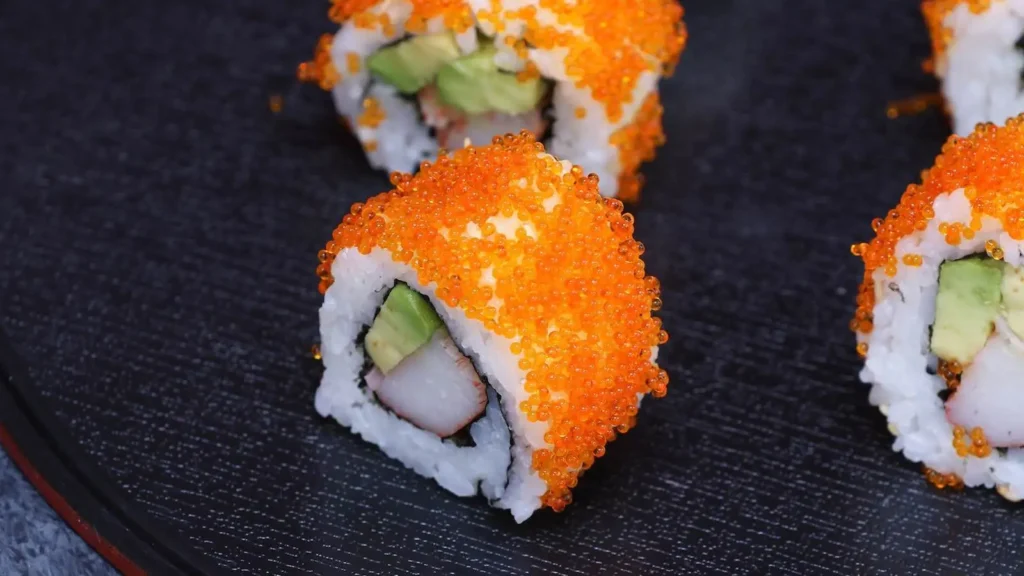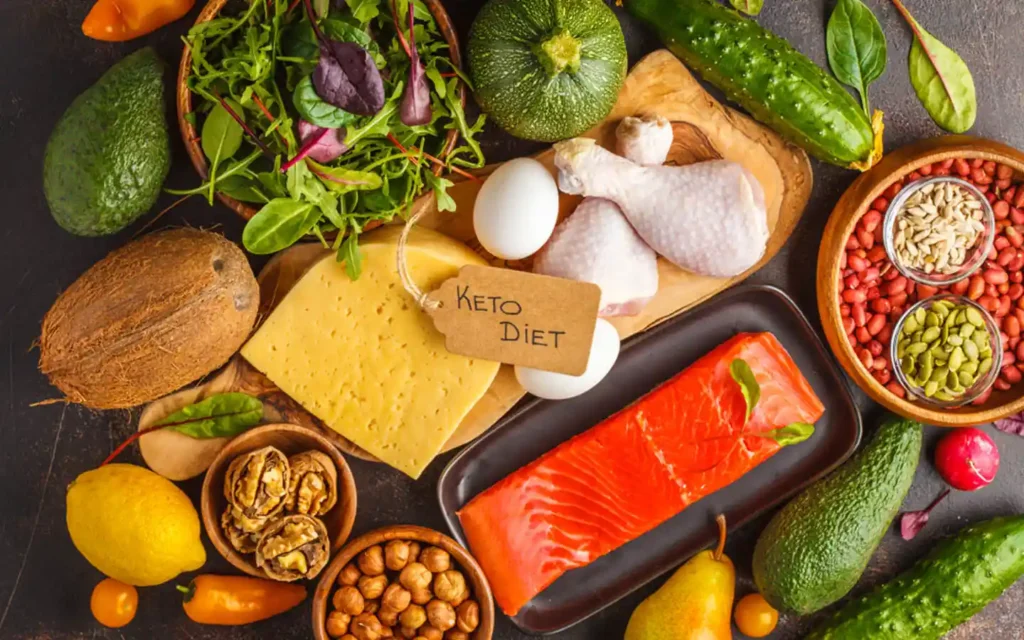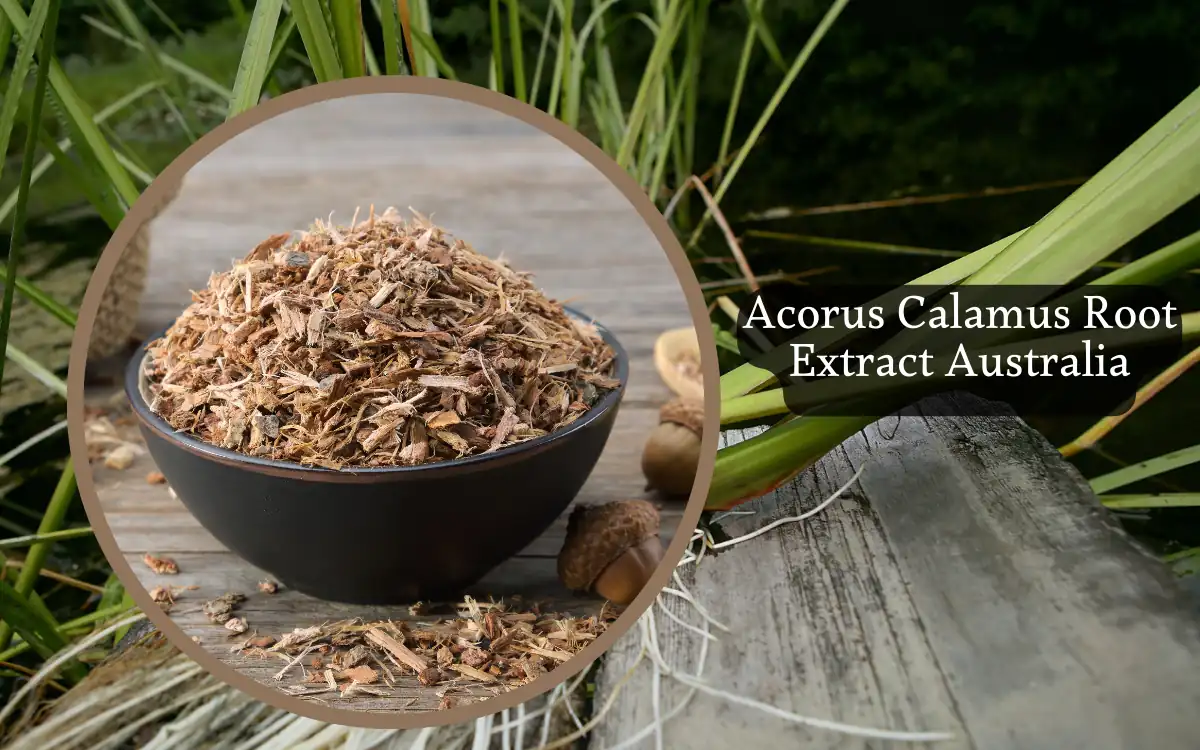You’re scrolling through a menu, maybe at your favorite sushi spot, and there it is—bright, orange, and a little mysterious. Masago. It’s sprinkled over your roll or tucked into that spicy mayo sauce.
You’ve probably had it without even realizing. But now you’re on keto—or at least trying to be—and the question hits: Can you still eat Masago on keto?
Let’s dive into that. Slowly, casually. No rush.
Also Read: Are Carbonated Soft Drinks Bad for Your Health? Side Effects
What Actually Is Masago?

So first thing’s first: what is Masago? It’s not just a garnish. Masago is the edible roe (aka fish eggs) from the capelin fish, a small forage fish commonly found in cold waters like the North Pacific and North Atlantic.
Capelin fish might not get the spotlight like salmon or tuna, but their roe? That’s where the magic happens. Masago has a crunchy texture, a salty flavor with a hint of oceanic umami, and comes in vibrant colors—bright orange, red, sometimes even black when dyed with squid ink.
It’s often used in Japanese cuisine and popular in sushi rolls, masago nigiri, or mixed into masago sauce to add flavor and visual pop. It’s a type of fish roe that’s cheaper than tobiko (flying fish roe), but honestly, most people wouldn’t even tell the difference taste-wise unless they’re connoisseurs.
So, Is Masago Keto-Friendly?
Short answer? Yes. Absolutely.
Masago is low in carbs, high in protein, and contains almost zero grams of sugar, making it an ideal fit for a high-protein diet like keto. If you’re counting macros:
| Nutrient | Amount per tbsp (16g) |
|---|---|
| Calories | ~40 |
| Protein | ~4g |
| Fat | ~2.5g |
| Carbohydrates | <1g |
| Sodium | ~300-400mg |
| Vitamin B12 | ~55% of Daily Value |
| Omega-3 Fatty Acids | Present |
So yeah, when it comes to daily intake, Masago fits quite snugly into a keto lifestyle.
But of course, like everything… context matters.
Health Benefits of Masago (Keto or Not)
Alright, so macros are one thing. But is Masago good for you?
Honestly, yes—but. We’ll get to the “but” in a second.
Here are some not-so-obvious benefits that actually make Masago pretty cool:
Also Read: How Long After Bottom Wisdom Teeth Removal Can I Eat a Burger?
1. Omega-3 Fatty Acids
These are your heart-healthy fats. They help reduce blood pressure, lower oxidative stress, and support cardiovascular health. Some studies even link omega-3s to better brain function and cognitive performance.
2. High-Quality Protein
Masago’s protein helps with muscle repair, muscle growth, and general tissue maintenance. You’re looking at complete protein here, containing all essential amino acids. Especially important on keto, where protein plays a crucial role in keeping your body in balance.
3. Vitamin B12 Boost
This is a big one. Masago is an excellent source of vitamin B12, a water-soluble vitamin needed for nerve health, immune function, and blood cell production. Many people, especially those not eating meat, are B12-deficient and don’t even know it.
4. Selenium & Antioxidants
There’s a decent amount of selenium in Masago, which is known for its powerful antioxidant properties. It helps protect cells from damage, influences immune system functions, and may play a role in thyroid health.
5. Low in Carbs
Let’s not forget the keto goal. Masago’s carbohydrate content is minimal, making it a great fit for those tracking grams of carbohydrates every day.
Pro Tip: Masago also adds texture to otherwise soft keto meals. A little crunch goes a long way in keeping food interesting.
But… Is There a Catch? (Yep.)
Okay, time for that “but” we mentioned earlier.
Masago isn’t all sunshine and sushi rolls. It’s important to understand a few downsides or at least things to watch out for.
1. Sodium Overload
Let’s be honest, Masago can be salty. Like, really salty. One tablespoon might pack 300–400mg of sodium. If you’re already getting a lot of salt from protein-rich foods, cheese, or processed keto snacks, adding Masago on top can push you closer to that excess salt consumption zone.
Modest salt reduction has been linked to better heart health and blood pressure control, so if you’re already on edge, maybe keep Masago to a sometimes-food.
Also Read: How Gastric Sleeve Surgery Ruined My Life – Here’s Proof
2. Allergic Reactions
Masago is a common food allergen, especially for people with seafood allergies or shellfish allergies. In some cases, people may experience an adverse reaction or a concomitant fish allergy. Think skin rashes, white patches, hives, or more severe symptoms.
If you’re sensitive to marine animals or have ever had a reaction to fish products, best to check with a health care professional before including Masago in your diet.
3. Additives
Sometimes, Masago is mixed with high-fructose corn syrup, monosodium glutamate (MSG), or artificial coloring (especially to enhance those bright colors). These ingredients might not be ideal if you’re trying to stick to clean keto or simply limit processed foods.
Quick story — once, I ordered sushi from a gas station (bad idea, I know), and the Masago was neon green. It looked like slime from a kid’s science kit. Tasted fine, but… lesson learned: check the source.
4. Mercury Levels (Though Minimal)
Like most types of seafood, there’s always that lingering concern about mercury exposure. Fortunately, because capelin is a small fish (and not a larger predator like tuna), mercury levels are typically lower. Still, if you’re pregnant or nursing, consult your doc. No guessing games there.
Tips for Eating Masago on Keto

Alright, so how do you include Masago in your keto diet smartly? A few ideas that have worked for me:
- Sushi Bowls – Use cauliflower rice, avocado, cucumber, salmon, and a dollop of Masago on top.
- Masago Deviled Eggs – Add a spoonful into the yolk mix. Salty, crunchy, creamy—just trust me.
- Masago Mayo Sauce – Mix with avocado mayo, a splash of lemon juice, maybe some sriracha. Boom—instant flavor bomb.
- Keto Sushi Rolls – Nori, cream cheese, smoked salmon, cucumber, all rolled up. Masago sprinkled on top.
- Avocado Boats – Halved avocado, filled with tuna or crab salad, topped with Masago. Minimal carbs, maximum flavor.
Just don’t go overboard. Masago’s salty and rich, so a little really does go a long way.
Conclusion
So, circling back—yes, Masago is keto-friendly. It fits the macro profile, offers numerous health benefits, and spices up your meals with distinct flavors and texture.
But like most things in nutrition, it’s about balance. Masago can be a rich source of protein, omega-3 fatty acids, and essential nutrients, but also packs a salty punch and may carry additives that don’t align with stricter eating styles.
Would I keep it in my keto rotation? Definitely. But maybe not every day. Think of it as a flavorful bonus rather than a staple.
And hey, if you’ve never really paid attention to that little orange topping before—next time, maybe give it a second look. It’s doing more for you than you think.
Frequently Asked Questions
1. Can I eat Masago daily on keto?
Technically yes, but I wouldn’t. The sodium content adds up quickly, so maybe a couple of times a week is smarter.
2. Is Masago better than Tobiko on keto?
Both are great, honestly. Masago is usually cheaper and slightly lower in fat. Tobiko’s crunchier. Your call.
3. What does Masago taste like?
It’s salty, slightly smoky, with a mild oceanic vibe. If you’ve had sushi, you’ve probably tasted it without knowing.
4. Is Masago raw?
Usually, yes. But it’s been pasteurized, so it’s not like sashimi-raw. Still, caution if you’re pregnant or immunocompromised.
5. Can I eat Masago if I’m allergic to shellfish?
Maybe not. If you’re sensitive to seafood in general, check with a doctor first. Better safe than itchy.
6. Are there carbs in Masago sauce?
There can be, depending on the mix. Masago mayo sometimes includes sugar or corn syrup. Check the label.
7. Where can I buy Masago for keto recipes?
Asian grocery stores, some Whole Foods, or even online. Look in the frozen section.
8. What color should Masago be?
Usually bright orange, but can be red, yellow, black (dyed with squid ink), or even green. Color doesn’t affect taste much.
9. Is Masago safe during pregnancy?
Not always recommended due to the raw nature and sodium content. Best to consult your OB-GYN.
10. How much Masago is too much?
More than 2–3 tablespoons a day might tip your sodium way over the edge. Use as a topping, not the main event.



